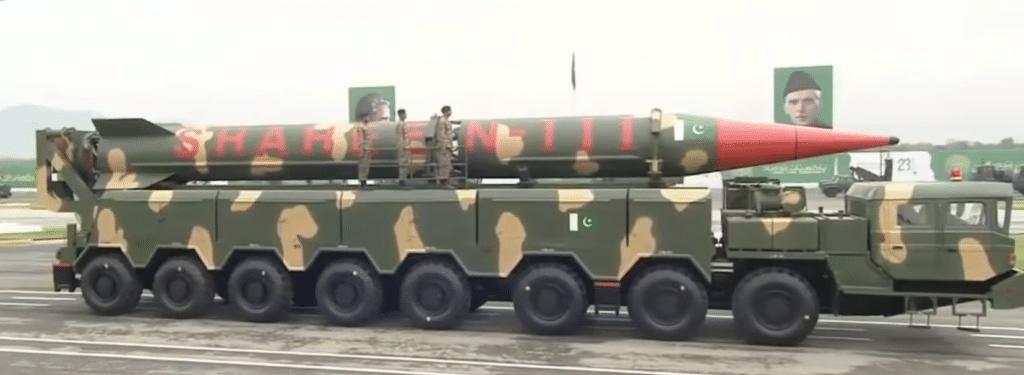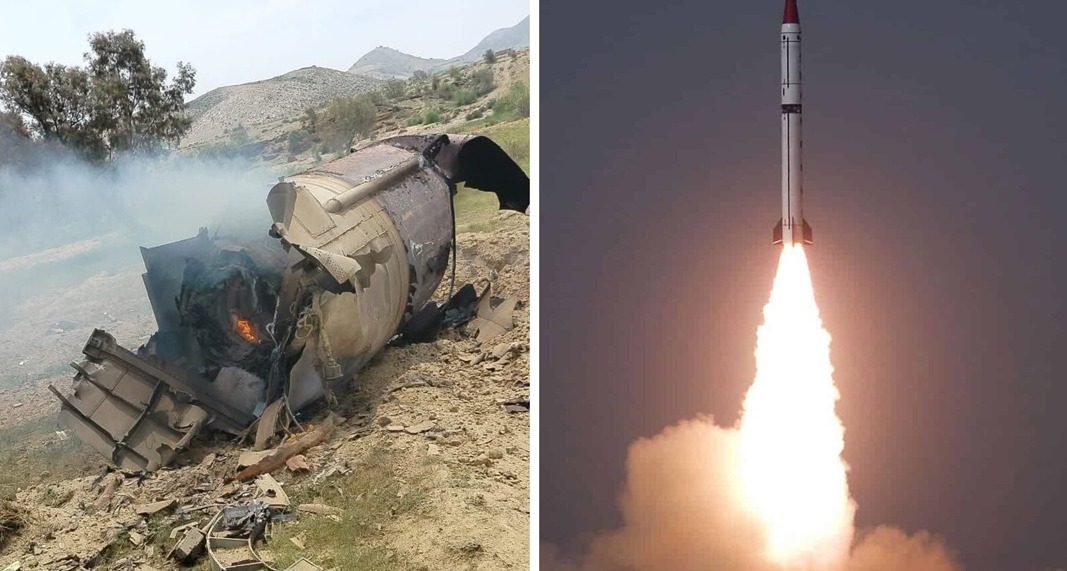On July 22, 2025, Pakistan’s ambitious ballistic missile program experienced a notable setback, and its strategic defense landscape was jolted by the high-profile failure of its Shaheen-3 ballistic missile test.
The incident, occurring near civilian settlements and in dangerously proximity to a primary nuclear site, has drawn national and international attention, not only over the technical reliability of Pakistan’s missile program but also concerning the safety of local populations and the geopolitical stability of South Asia.
Shaheen-III Missile
The Shaheen-III, developed by Pakistan’s National Development Complex (NDC) in collaboration with the National Engineering and Scientific Commission (NESCOM), constitutes a fundamental component of the nation’s strategic defence capabilities.
With an asserted range of 2,750 kilometers, this missile is engineered to carry both conventional and nuclear warheads, thereby ranking among Pakistan’s most sophisticated systems.
Its development is regarded as a strategic response to India’s expanding missile capabilities, including the Agni series, and aims to maintain deterrence within the volatile security environment of South Asia.
The missile’s capacity to reach targets over an extensive geographical area highlights its strategic importance.

The Incident
The Shaheen-3 was launched from the Dera Ghazi Khan region in Punjab. According to multiple credible reports, the missile deviated from its planned trajectory shortly after launch and crashed in the Matt area of Dera Bugti district in Balochistan.
The impact site was alarmingly close, approximately 500 meters, to civilian settlements and within the vicinity of a significant nuclear facility.
Residents reported a powerful explosion near the Loop Seharani Levies Station, which was heard 20–50 kilometers away. Shockwaves of concern rippled through nearby communities, leading to scenes of panic and evacuation as locals rushed to distance themselves from a potential disaster.
Social media platforms circulated videos and messages depicting the chaos.
Local Reaction
Pakistan’s Inter-Services Public Relations (ISPR) issued a brief statement acknowledging the test but maintained that all safety standards were followed.
The statement, however, lacked specifics about the cause of the failure or the environmental impact of the crash. This opacity has fuelled speculation and criticism, both domestically and internationally.
Analysts point out that the absence of transparent reporting on such incidents undermines public confidence in Pakistan’s missile program and raises questions about the technical reliability of the Shaheen-III.
Safety & Security Concerns
The close call between the missile crash and a densely populated area, combined with the proximity to critical nuclear infrastructure, has highlighted serious safety and security vulnerabilities.
Given Balochistan’s historical sensitivity due to both its restive population and strategic assets, the event stoked local and national anxieties about the risks associated with missile tests conducted in such areas.
While there were no immediate reports of casualties, the potential for significant harm was evident. The magnitude of the blast, the risk of radioactive contamination, and the psychological fear instilled in the local population have all contributed to widespread condemnation and calls for more responsible test protocols.
Technical Reliability & Pattern of Failures
What makes this incident particularly concerning is its apparent repeat of past failures. Reports indicate that previous Shaheen-3 tests, including those in 2023, also resulted in accidents near nuclear or sensitive military infrastructure.
This pattern of technical shortcomings raises fundamental questions over the actual operational reliability of Pakistan’s most far-reaching missile.

Reinforcement Of US Concerns
The timing of the failure is notably significant, occurring merely months after the United States imposed sanctions in December 2024 on entities associated with Pakistan’s ballistic missile program.
The United States expressed concerns regarding proliferation risks and the potential for missile technology to destabilise the region.
This unsuccessful test is likely to intensify these concerns, supplying additional argumentation to critics who contend that Pakistan’s missile development suffers from insufficient oversight and technical maturity.
Strategic Significance
The Shaheen-3 is considered a central pillar of Pakistan’s deterrence strategy, designed to ensure that all major cities in India and beyond are within striking distance.
The reliability of such a strategic asset is therefore crucial, not merely for defence planners in Islamabad but also for regional actors who closely monitor each development as part of a delicate balance of power.
Its recent failures have reignited debate over the safety of ongoing missile development and testing in densely inhabited or strategically sensitive regions.
The risk of sparking a larger geopolitical crisis, either by accident or escalation, is heightened whenever flaws in command, control, or technical functioning come to light. The failure of the Shaheen-3 test not only undermines the credibility of this deterrence strategy but also raises questions about the effectiveness of Pakistan’s missile program.
The Shaheen-III test failure is likely to have far-reaching consequences. For Pakistan, it represents a setback in its quest for a credible deterrent against regional rivals.
For the international community, it underscores the challenges of managing proliferation risks in a region marked by intense strategic competition. It serves as a stark reminder of the serious risks associated with the testing and deployment of advanced ballistic missile technology in volatile environments.
It exposes both persistent technical challenges and deep-rooted concerns over transparency and public safety.
The incident has reignited discussion on the necessity of responsible stewardship over strategic assets, especially those capable of influencing the delicate balance of peace and security in the region, highlighting the importance of the issue.
- Air Marshal Anil Khosla is a former Vice Chief of Air Staff (VCAS) of the Indian Air Force and AOC in C of Eastern Air Command.
- He tweets at: @AnilKhosla16



